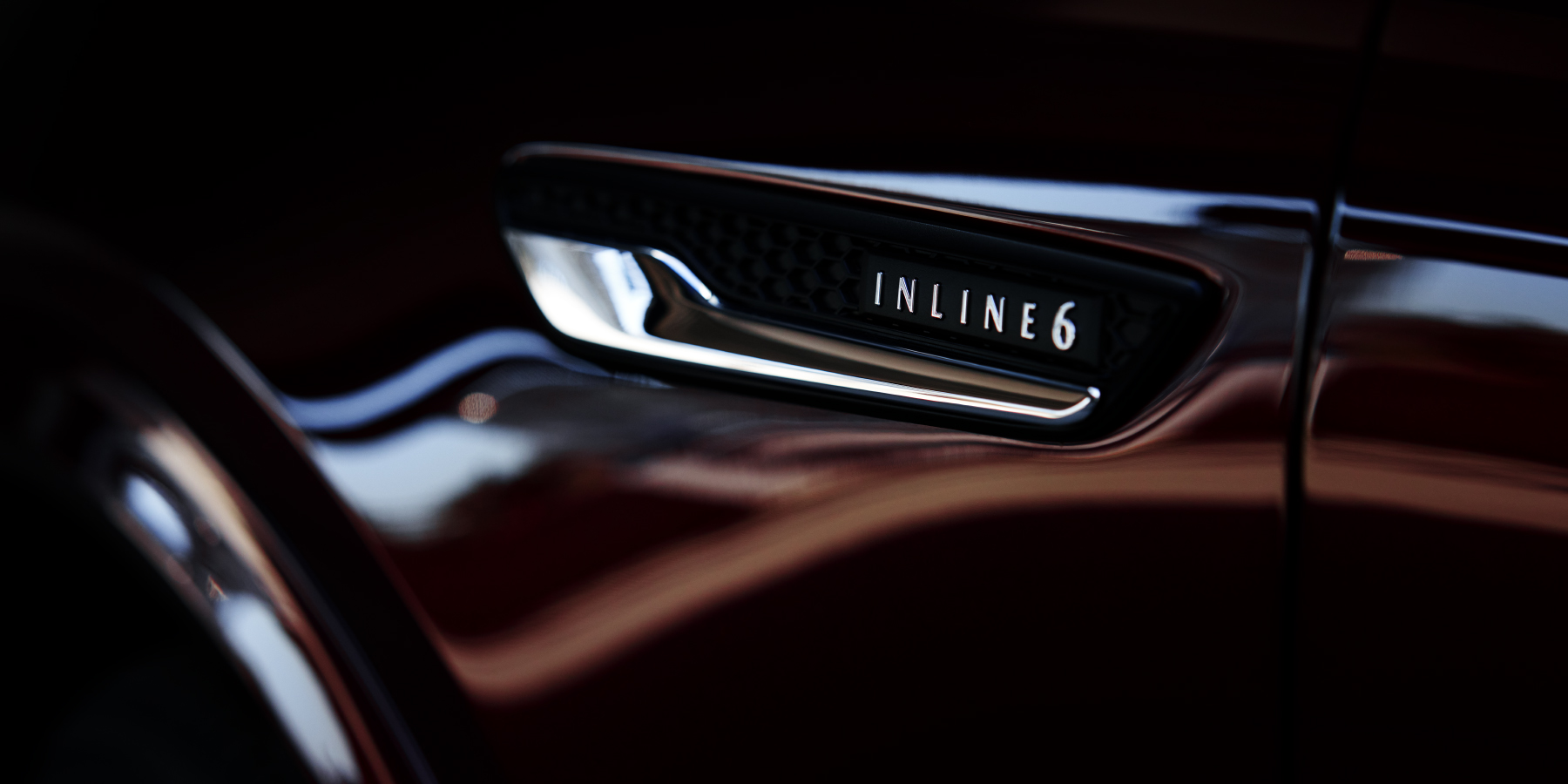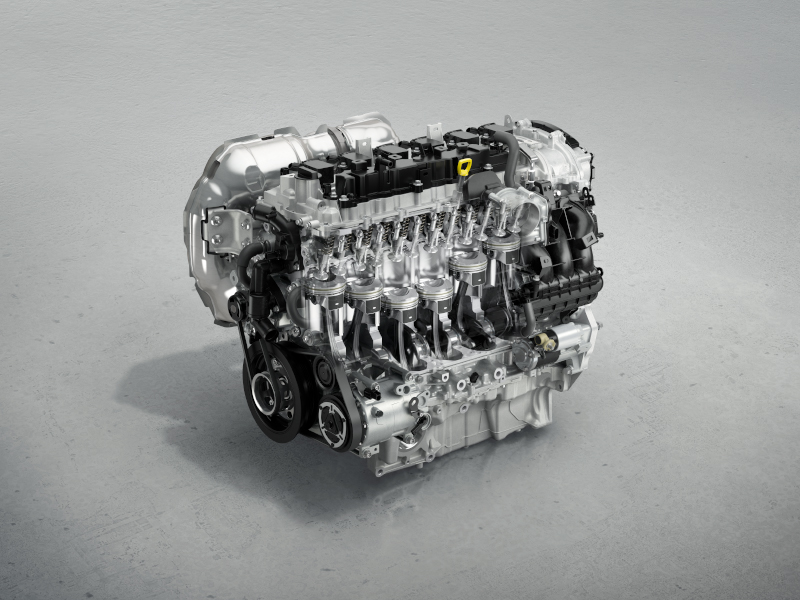V6 vs. V8 Engines: What’s the Difference & Which Do You Need?
V6 engines have 6 cylinders, while V8 engines have 8. Each type has its advantages & disadvantages.

V6 and V8 engines differ based on the number of cylinders each engine has — V6 engines have 6 cylinders, while V8 engines have 8 cylinders. V6 and V8 engines are quite similar, but what is different about them can impact vehicle performance in several ways.
While engine specifics vary from vehicle to vehicle, we’ll cover the main differences between the V6 and the V8 engine and the pros and cons that come along with each engine type, generally.
Helpful terms
If you’re new to the world of engines, there can be a lot of familiar-but-not-familiar terminology involved. Here’s a few helpful terms to know when exploring V6 vs. V8 engines.
● Cylinder: This is the can-shaped part of the engine in which the piston travels downward, pushed by expanding gasses from the combustion chamber above. That combustion event is how power for the vehicle is generated.
● Horsepower: This unit of measurement represents the engine's ability to deliver a certain amount of power to move the vehicle and is a measure of the rate at which the engine can perform work.
● Torque: Torque is a measure of the rotational force applied to an object to cause it to rotate, representing the twisting force that the engine generates to turn the wheels.
● Fuel economy: Fuel economy is a measure of how far a vehicle will travel on a prescribed amount of fuel. In the U.S. it is typically given in miles-per-gallon. Engine size and cylinder count can play a role in determining a vehicle’s fuel economy but are just one aspect of many.
Understanding the difference between V6 and V8 engines
What does the “V” stand for?
The “V” refers to the engine’s configuration, where the cylinders are arranged in a V-shape. So, whether you’re operating a V6 or a V8 (or V10, V12, etc.) vehicle, the meaning of the “V” remains the same.
In the same vein, an “I” indicates an engine where all the cylinders are inline, like a Mazda CX-90 3.3L Inline 6, while an “H” (for horizontally opposed) or “F” (flat) indicates an engine with the cylinders opposite each other, as in many light aircraft.

What is a V6 engine?
V6 engines are a type of internal combustion engine that features 6 cylinders arranged in 2 rows or “banks,” with 3 cylinders in each row. V6 engines are commonly midsize (typically 2.5-4.3 liters), offering a balance between performance and fuel efficiency, and the V configuration allows them to fit in a shorter space (like sideways under the hood of a front-drive car) than an Inline 6-cylinder engine.
Where do you find V6 engines?
V6 engines can be found in a variety of different vehicles, including sedans, coupes, midsize SUVs and trucks, minivans, and crossovers.
What is a V8 engine?
Also, an internal combustion engine, a V8 engine has 8 cylinders arranged in 2 rows, with 4 cylinders in each row. V8 engines are typically larger than 6-cylinder engines (3.8-7.3 liters) and generate higher outputs, which is why they’re popular where performance — be it speed, towing, or emergency vehicles — is prioritized over fuel economy. All other things being equal, a V8 runs smoother than a V6, and many prefer the sound of a V8.
Where do you find V8 engines?
V8 engines are found in high-performance vehicles like sports cars, trucks, full-size SUVs, “muscle cars,” and other work vehicles.
V6 vs. V8 pros and cons
While these are both V-configured, internal combustion engines, there are specific benefits and disadvantages associated with both. The following breakdown assumes the same design, features, and equipment on both V6 and V8 engines:
Pros of V6 engines:
● A V6 engine is typically lighter than a V8, improving handling, vehicle balance, and steering feel. A smaller V6 engine tends to provide better fuel economy than larger V8 engines.
● Vehicles with V6 engines tend to be less expensive than vehicles with V8 engines.
Cons of V6 engines:
● Smaller V6 engines accelerate slower because the larger V8 engines typically have more horsepower and relatively more torque.
● While a V6 engine can deliver the same (or sometimes more) power-per-liter than a V8, the V8’s larger size delivers the stronger outputs.
Pros of V8 engines:
● V8 engines have higher power outputs.
● V8 engines are more suited to hauling and towing heavy loads thanks to increased capacity and low-RPM (revolutions per minute) torque.
●V8 engines are generally smoother and more refined.
Cons of V8 engines:
● Vehicles with V8 engines are usually more expensive than V6 vehicles.
● V8 vehicles tend to burn more fuel.
●V8 vehicles tend to be heavier.
What about Inline 6 engines?
The Inline 6 engine offers several advantages compared to V6 configuration because of its straight-line arrangement. A V6 engine can generate a rocking sensation as cylinders fire opposite each other, where the Inline 6 design allows cylinders to fire with balance, minimizing vibrations for a smoother driving experience approaching that of a V8. This design also permits longer cylinder stroke dimensions, leading to the potential for increased low-end torque and better fuel efficiency (doing the same work on less fuel). While an Inline 6 is longer than a V6, it does not require the same wide engine bay that a V6 or a V8 would.
Mazda takes a different approach to engine technology
Our most spacious SUV yet, the CX-90, offers up to 8 seats, the Mazda signature i-ACTIV AWD®, and Mi-Drive mode-switching capabilities, including Normal, Sport, Off-Road, and available Towing.
Explore and compare the CX-90 online or take one on a test drive today at a Mazda Dealer near you.
This article is intended for general informational purposes only and is based on the latest competitive information available at the time of posting. Information herein is subject to change without notice and without Mazda incurring any obligations. Please review a variety of resources prior to making a purchasing decision. Visit Resource Center for more articles.




















